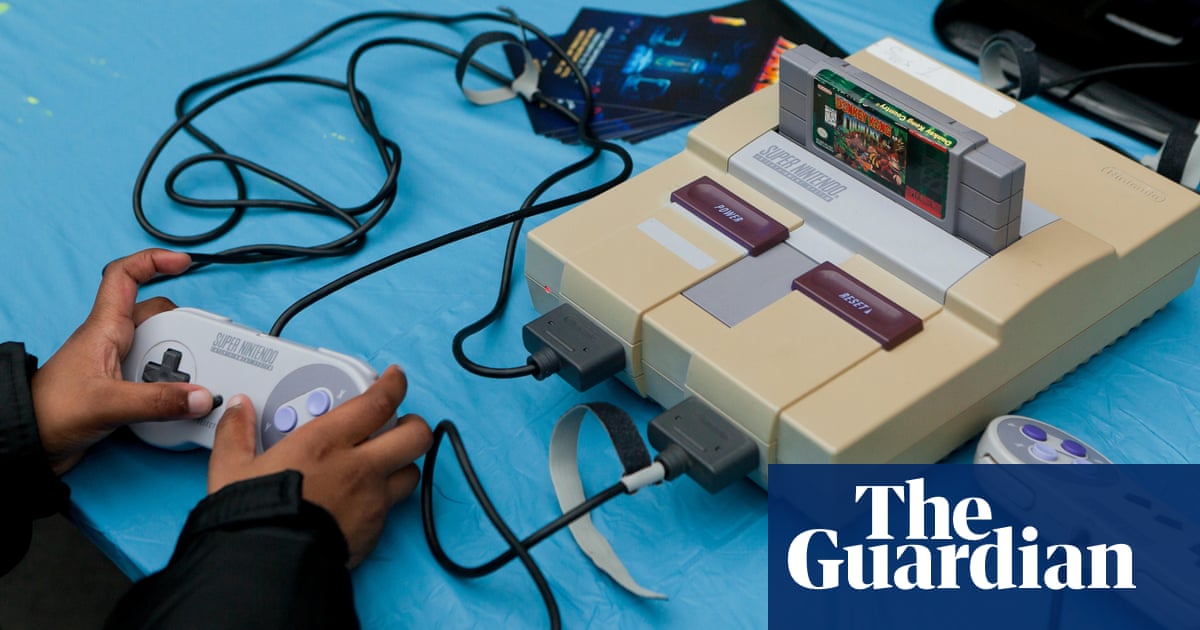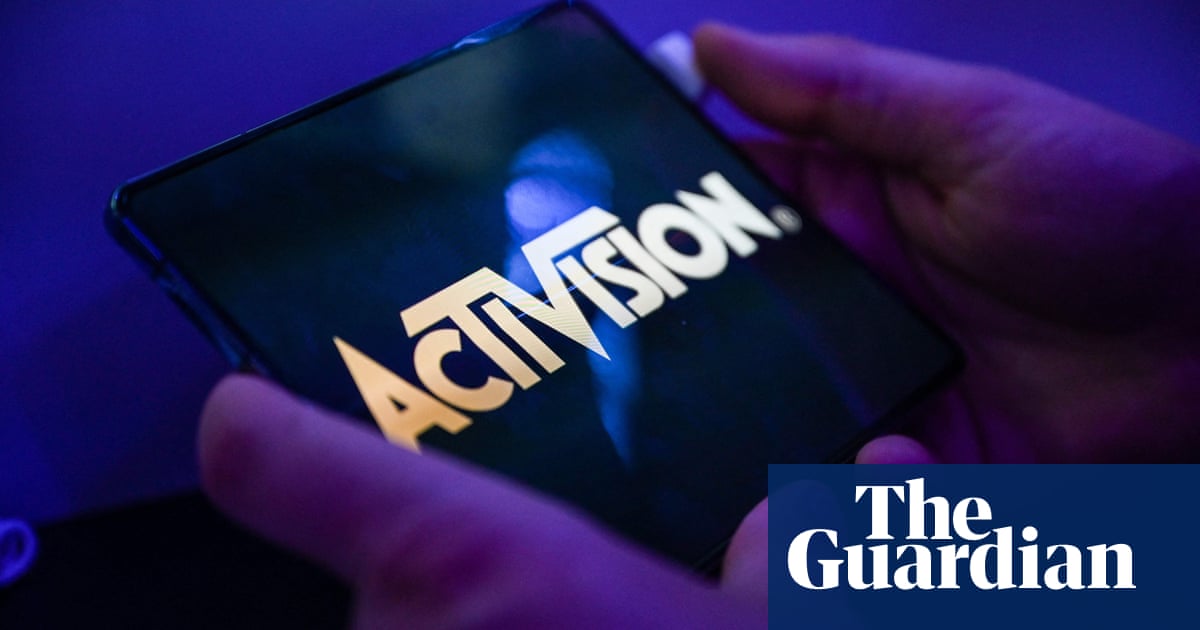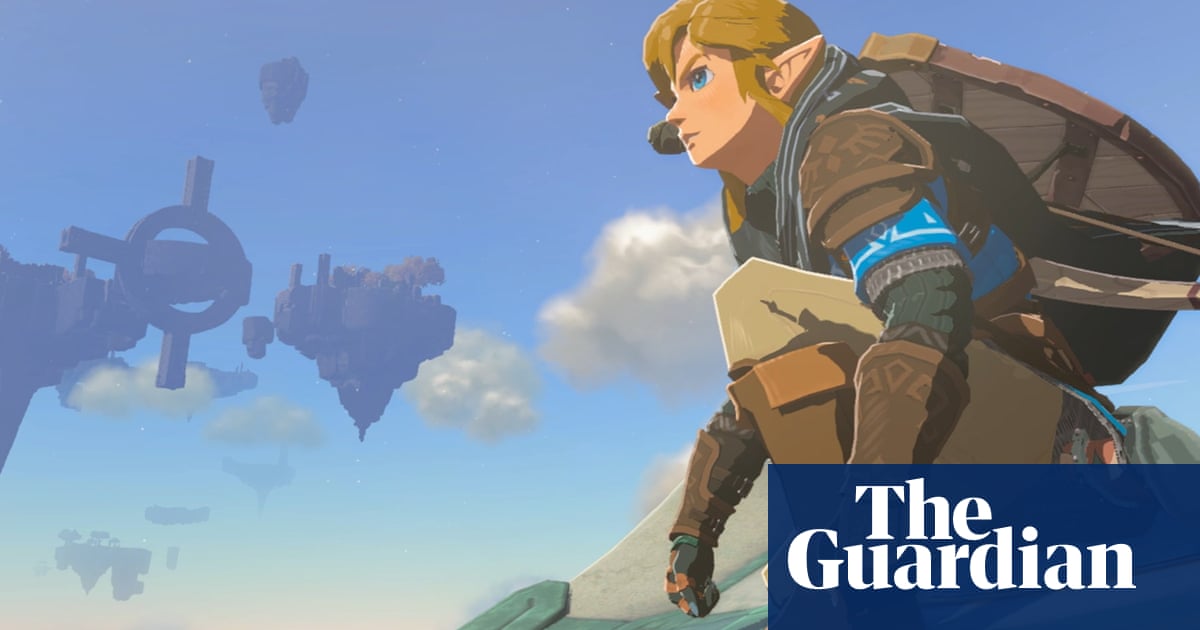
Grim news heralded in a report published this week by the Video Game History Foundation, which claims that 87% of video games released before 2010 are no longer commercially available. This equates to a lacuna of tens of thousands of works, many of which represent key moments in the medium’s evolution. It’s an excruciating loss of source material for the people who worked on these games, as well as for historians and archivists, for gem-hunters and for any younger player who might wish to enjoy interactive works created in different socio-political circumstances, against different technological constraints and fashions or within different market conditions.
The void is not unique to video games – there are books that are no longer published even in digital form, some films can only be watched on defunct formats, others disappear from streaming services mere months after release – but the scale of the video game void is unmatched in other media. According to the report, less than 5% of games from the Commodore 64 are still available today. The 13% availability rate of classic video games is one percentage point less than that of American silent films. As the foundation’s co-director Frank Cifaldi tweeted: “Nine out of 10 classic video games are no longer available to consumers, and that number is unlikely to get any better. It’s practically guaranteed that something you grew up with is gone, for ever.”
The reasons for the vacuum are myriad – and slightly tedious. The technology for distributing books and films is straightforward and mostly unchanging. By contrast, every video game system is different, so bringing, say, a Spectrum game to a PlayStation 5 requires various acts of technological reshaping. There may be question of expired licenses (both the Xbox’s joyous OutRun 2 and the Dreamcast’s solemn Ferrari 355 Challenge were based on expensive and time-limited authorisations from the Italian carmaker). And, while some major game companies like EA have archivists dedicated to collecting their teams’ art materials and source code, the video game industry has always failed to properly recognise and celebrate its past. Sega reportedly lost the source code for one of its most celebrated and difficult-to-find Saturn games, Panzer Dragoon Saga, leaving anyone who wants to play the game to slink off to eBay, where, grief-stricken, they will have to pay a minimum of £500 for the privilege.
Video games are, in part, iterative works of technology and engineering, like toasters, or televisions, so there is an inherent assumption that the new must always surpass the old. A wag might point out that, with a series as iterative as Fifa, who would want to sit down for a match of Fifa 15, 16, 17 or 18 when Fifa 23 exists? Well, even these evolutionary series have enduring vectors of interest: each game offers a snapshot of professional soccer at a particular moment. When so much real-world data is drawn into each game, a Fifa 15 can, surprisingly, offer a tactile, holistic snapshot of the beautiful game at a particular moment in history. And games are simultaneously artistic works; oftentimes the best writing, music, and designs are found not in the great plains of the now, but in the dark forests of the past.
The options for anyone wanting to play older video games are woundingly limited: either find the original hardware, or delve into the perilous terrain of emulation. Neither is straightforward. Cartridges and consoles age like people; yellowing plastic is a cosmetic affliction, but if a capacitor on the chipboard leaks it can cause irreparable damage. Then there are the costs involved: securing a basic Super Nintendo or Sega MegaDrive is relatively affordable; finding a copy of the classic RPG Chrono Trigger or Treasure’s masterpiece Alien Soldier will cost you several hundred pounds on eBay. A conservative estimate puts the value of the entire Neo Geo library of games – all European, US and Japanese variants – at around $250,000.
Emulation is equally fraught terrain: once you’ve downloaded and installed the software to play, say, the Neo Geo library, you have the much trickier task of locating the “Roms” themselves, those files that contain the game’s code, art and music, and which, due to the questionable legality of distribution, can often only be found on virus-riddled, pop-up-laced websites designed to steal bank details from an octogenarian’s laptop. Notably, emulation can only ever offer an approximation of the original hardware’s behaviour, so is never a wholly accurate representation of the original.
I am relatively fortunate. My father was always working on a collection of one kind of another when I was growing up: matchbox cars; gramophone needle tins; first editions of every Booker prize winner. I would accompany him early on a Saturday morning to Portobello Road market, and flick through bootleg cassettes of Nirvana gigs while he ducked and haggled among the stalls. I learned from him the value in spotting a future collectible and was taught to always look after the things I treasured, keeping the packaging safe and ensuring the right CDs and cartridges went back into the right boxes. As such, I still own most of the consoles I’ve bought in my lifetime, as well as many video games that I could not easily afford if I had to repurchase them today.
For those who want to play classic games in accurate ways the rise of field-programmable gate array (FGPA) chips, which allow the creation of wunderkind cartridges that can be loaded with Roms, but which work on the original hardware, provide an elitists’ route into the scene. Hobbyist engineers have created a slew of FGPA cartridges for classic systems, such as the Everdrive series designed and sold by the Ukrainian programmer Igor Golubovskiy, or the Spanish team Terraonion – high-quality ways to play old games in authentic ways, driven by contemporary technologies. But these remain expensive options for wealthy enthusiasts (even then you also need to own a CRT television to run the games in their proper format – a form of technology that is no longer manufactured anywhere).
Emulation, then, seems to be the most democratic, workable way to salvage video game history. There is an appetite for a catch-all solution. In 2021, Microsoft gaming chief Phil Spencer told Axios he hoped for an industry-wide, emulation-based solution to preserving older video games. (Microsoft, it should be noted, has done more work to preserve and promote its back catalogue than its rivals). And while game companies have, in the past, shown themselves to be litigious when it comes to emulation – a close cousin, arguably, to piracy – the hobbyist archivists have sometimes come to the rescue too. Recently I spoke to Kelsey Lewin, co-director of the Video Game Foundation on my podcast My Perfect Console. She revealed that when staff at Disney realised the company had lost the source code for film tie-in game, Aladdin, the foundation was able to provide them with copies of the files – proof, perhaps, that the future of video-gaming’s past may be reliant, not on the publishers, but on the people.
What to play
Originally released for the Nintendo DS – the dual-screened handheld system that answered the question: what if a Game Boy functioned like a compact mirror – in Ghost Trick: Phantom Detective you play as a spectre who must solve his own murder. Directed by Ace Attorney creator Shu Takumi, the game moves from the courtroom to the scene of a series of crimes but retains all of the Phoenix Wright series’ humour and intrigue. Your character, Sissel, enjoys the enviable ability to rewind time to precisely four minutes before any death; in each mission your task is to prevent impending calamity.
As a ghost Sissel can’t directly stay a murderer’s hand, but he can haunt and manipulate inanimate objects, creating a distraction by creating domestic-scale distractions: flushing toilets, knocking over glasses, letting off party poppers and the like. The script is funny, and the interplay between story and mechanics endlessly delightful. Born in another generation, Takumi might have been a murder mystery author of Agatha Christie-like popularity; instead, we have the chance to appreciate his restless genius within the interactive sphere.
Available on: Nintendo Switch, PlayStation 4, Windows, Xbox One
What to read
The New York Times reports on an illicit romance between a Pakistani woman and an Indian man that blossomed in the pioneering battle royale game PUBG. The 27-year-old Seema Ghulam Haider, a Muslim who has claimed she was abandoned by her husband, sold the family home, then travelled to India with her four children, to start a new life with Sachin Meena, a 22-year-old Hindu. The affair has broken not only religious and cultural taboos, but also international ones, due to tensions between India and Pakistani. The couple’s love, however, seems authentic. “She knew that he was not financially very strong,” said police. “She was not impressed by his work, but by his PUBG skills.”
The California-based YouTube video game documentary-maker Danny O’Dwyer has rescued thousands of tapes containing rare video game footage from oblivion. A viewer contacted O’Dwyer with a tip-off that a media company in San Francisco owned the footage, much of which is stored on defunct formats; the company agreed to let O’Dwyer have the tapes, which were otherwise to be sent to landfill. The tapes include demo reels, interviews and behind-the-scenes clips; among the haul he has found a yet-to-be-broadcast interview with Metal Gear Solid creator Hideo Kojima, and a tour of an employee-only museum inside Nintendo’s former USA headquarters.
The Financial Times has published a profile of Debbie Bestwick, chief executive of Team17, the UK-based video games developer and publisher best-known for the Worms series. According to the FT, Bestwick, who started out working at a video game retailer when she was a teenager, is the longest-serving female CEO in the games industry. The company name derived from the 16-bit chip that powered the personal computers of the time. “We were one bit better than the rest,” said Bestwick.
What to click
‘It’s fun to cook up the stupidest idea’: the people competing to make the worst computer games possible
Oxenfree II: Lost Signals review – leisurely island adventure charms again
Summer games previews: how Times & Galaxy nails journalism
Wimbledon courts the young with video games and fashion brand












